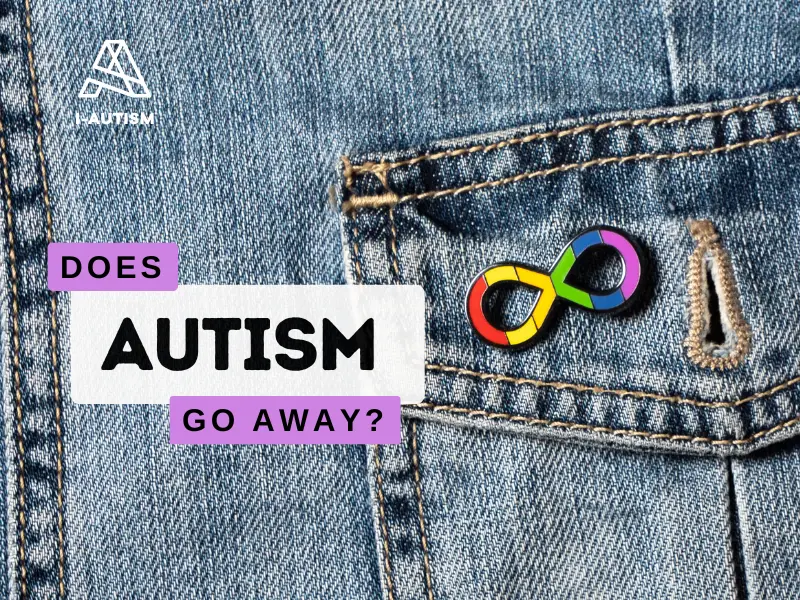Autism Spectrum Disorder (ASD) is a complex neurodevelopmental condition that affects how individuals communicate, interact, and perceive the world around them. One common question that arises among parents, caregivers, and individuals on the spectrum is whether autism can “go away” or if it is a lifelong condition. The short answer is No, Autism is a lifelong condition. This blog will explore the nature of autism, the concept of “recovery,” the importance of early intervention, and the ongoing support that individuals with autism may need throughout their lives.
Understanding Autism Spectrum Disorder
What is Autism?
Autism Spectrum Disorder (ASD) is characterized by a range of symptoms and challenges related to social communication, behavior, and sensory processing. The term “spectrum” reflects the wide variability in how autism presents itself in different individuals. Some may have significant challenges, while others may have average or above-average intelligence and function well in everyday life.
Diagnostic Criteria
According to the DSM-5 (Diagnostic and Statistical Manual of Mental Disorders, Fifth Edition), the criteria for diagnosing autism include:
- Persistent deficits in social communication and social interaction across multiple contexts.
- Restricted, repetitive patterns of behavior, interests, or activities.
- Symptoms must be present in the early developmental period (though they may not become fully manifest until social demands exceed limited capacities).
- Symptoms cause clinically significant impairment in social, occupational, or other important areas of functioning.
Lifelong Condition
It is essential to understand that ASD is generally considered a lifelong condition. While individuals may learn strategies to manage their symptoms and improve their quality of life, the core characteristics of autism typically remain throughout life. However, the way these characteristics manifest can change as individuals grow and develop.
The Concept of “Recovery” from Autism
What Does Recovery Mean?
The term “recovery” in the context of autism can be somewhat controversial and is often misunderstood. Some families and advocates use the term to describe significant improvements in functioning and the ability to navigate everyday life. These improvements may lead to an individual being described as “high-functioning” or even “no longer autistic” in the eyes of some observers.
Realistic Expectations
It is important to have realistic expectations regarding recovery from autism. While some individuals may achieve significant progress, particularly with early intervention, it is crucial to recognize that they may still experience challenges related to social communication, sensory sensitivities, or other aspects of autism.
Case Studies and Research
Research has shown that some individuals diagnosed with autism in early childhood may later no longer meet the diagnostic criteria for autism as they grow older. Studies suggest that early intervention, tailored support, and a nurturing environment can lead to substantial improvements in skills and behaviors. However, these cases are not the norm, and the majority of individuals with autism will continue to experience some level of challenges throughout their lives.
The Importance of Early Intervention
The Role of Early Intervention
Early intervention is critical for improving outcomes for children with autism. The earlier a child receives support, the better their chances are for developing essential skills in communication, social interaction, and daily living. Early intervention programs may include:
- Speech and Language Therapy: Helping children develop effective communication skills.
- Occupational Therapy: Addressing sensory processing issues and promoting daily living skills.
- Behavioral Therapy: Implementing strategies such as Applied Behavior Analysis (ABA) to reinforce positive behaviors and reduce challenging behaviors.
Long-Term Benefits
Research has consistently shown that early intervention can lead to better long-term outcomes for individuals with autism. Children who receive appropriate support during their formative years may demonstrate improved social skills, academic performance, and overall quality of life. These benefits highlight the importance of prompt identification and intervention for children who exhibit signs of autism.
Individual Differences and Lifelong Support
A Spectrum of Needs
Autism is a spectrum, meaning that each individual has unique strengths, challenges, and needs. Some individuals may require ongoing support throughout their lives, while others may develop the skills necessary to live independently. Factors influencing the level of support needed include:
- Severity of Symptoms: Individuals with more pronounced challenges in communication and behavior may require more intensive support.
- Co-occurring Conditions: Many individuals with ASD also experience additional challenges, such as anxiety, ADHD, or sensory processing disorder, which can impact their overall functioning.
- Support Systems: The availability of family, community, and professional support can significantly affect an individual’s development and quality of life.
Lifelong Learning and Adaptation
While ASD is a lifelong condition, individuals can continue to learn and adapt throughout their lives. Many people with ASD develop coping strategies and skills that help them navigate social situations and daily activities more effectively. Support from therapists, educators, and family members can play a crucial role in fostering this growth.
The Role of Acceptance and Understanding
Embracing Neurodiversity
In recent years, there has been a growing movement toward embracing neurodiversity—the idea that neurological differences, including autism, are a natural part of human diversity. This perspective encourages acceptance and understanding of individuals with autism rather than viewing them solely through the lens of deficits or disorders.
Promoting Acceptance
Promoting acceptance of ASD within society is essential for creating inclusive environments where individuals on the spectrum can thrive. This includes:
- Education and Awareness: Raising awareness about ASD and its characteristics can help dispel myths and misconceptions, fostering a more inclusive attitude.
- Advocacy: Supporting policies and initiatives that promote the rights and inclusion of individuals with ASD in education, employment, and community life.
- Celebrating Strengths: Recognizing and celebrating the unique strengths and talents of individuals with ASD can contribute to a more positive and accepting view of neurodiversity.
FAQs | Does Autism Go Away? Is It a Lifelong Disability?
Autism Spectrum Disorder (ASD) is a complex neurodevelopmental condition that affects individuals in unique ways. One of the most common questions asked by parents, caregivers, and individuals with autism is whether autism “goes away” or if it is a lifelong condition. Below, we address this question and provide detailed answers to 12 frequently asked questions about autism, its progression, and its impact across the lifespan.
1. Is Autism a Lifelong Condition?
- Answer: Yes, autism is a lifelong condition. It is a neurodevelopmental disorder that affects brain development and functioning, and its core characteristics persist throughout an individual’s life. However, the way autism manifests can change over time, and with appropriate support and intervention, many individuals with autism can lead fulfilling and independent lives.
2. Can Autism “Go Away” or Be Cured?
- Answer: Autism cannot be “cured” or “go away” in the traditional sense. It is not an illness or disease but a different way of experiencing and interacting with the world. While some individuals may develop coping strategies or skills that make their symptoms less noticeable, they will always have autism. Early intervention and therapy can significantly improve outcomes, but they do not eliminate autism.
3. Do Symptoms of Autism Change Over Time?
- Answer: Yes, the symptoms of autism can change over time. Many individuals experience improvements in certain areas, such as communication, social skills, and adaptive behaviors, particularly with early intervention and ongoing support. However, new challenges may arise during different life stages, such as adolescence or adulthood, requiring tailored strategies and accommodations.
4. Can Someone “Outgrow” Autism?
- Answer: No, individuals cannot “outgrow” autism. However, some children who are diagnosed with autism at a young age may no longer meet the diagnostic criteria later in life due to significant developmental progress. This is often referred to as “optimal outcome,” but it is rare and typically the result of intensive early intervention and support.
5. What Is the Long-Term Prognosis for Individuals with Autism?
- Answer: The long-term prognosis for individuals with autism varies widely and depends on factors such as the severity of symptoms, access to early intervention, and the presence of co-occurring conditions (e.g., intellectual disability, anxiety). Many individuals with autism can achieve independence, pursue careers, and build meaningful relationships with the right support.
6. How Does Autism Affect Adults?
- Answer: In adulthood, autism may present challenges in areas such as:
- Employment: Difficulty with workplace communication, sensory sensitivities, or executive functioning.
- Relationships: Struggles with social interactions or understanding social norms.
- Independent Living: Challenges with daily living skills, such as managing finances or household tasks.
- However, many adults with autism develop strategies to manage these challenges and lead fulfilling lives.
7. Can Therapy Reduce the Impact of Autism?
- Answer: Yes, therapy can significantly reduce the impact of autism by helping individuals develop skills in areas such as communication, social interaction, and emotional regulation. Evidence-based therapies include:
- Applied Behavior Analysis (ABA): Focuses on improving specific behaviors and skills.
- Speech Therapy: Addresses communication challenges.
- Occupational Therapy: Helps with sensory processing and daily living skills.
- Cognitive-Behavioral Therapy (CBT): Manages anxiety, depression, or other co-occurring conditions.
8. What Role Does Early Intervention Play?
- Answer: Early intervention is critical for improving outcomes in individuals with autism. Research shows that starting therapy during the preschool years can lead to significant gains in communication, social skills, and cognitive development. Early intervention programs often include speech therapy, occupational therapy, and behavioral interventions tailored to the child’s needs.
9. Are There Adults Who Are Diagnosed with Autism Later in Life?
- Answer: Yes, many adults are diagnosed with autism later in life, often after years of struggling with undiagnosed challenges. Late diagnosis can bring clarity and access to support but may also involve feelings of grief or missed opportunities. Adults diagnosed with autism can benefit from therapy, support groups, and accommodations in the workplace.
10. Can Individuals with Autism Live Independently?
- Answer: Many individuals with autism can live independently, particularly those with lower support needs. However, some may require ongoing support or assistance with daily tasks. Factors that influence independence include the severity of symptoms, access to resources, and the development of adaptive skills.
11. What Are the Most Common Co-Occurring Conditions in Autism?
- Answer: Individuals with autism often experience co-occurring conditions, such as:
- Anxiety and Depression: Common in both children and adults with autism.
- ADHD: Frequently co-occurs with autism, leading to challenges with attention and impulsivity.
- Sensory Processing Disorder: Affects how individuals respond to sensory input.
- Intellectual Disability: Present in approximately 30% of individuals with autism.
- Epilepsy: More common in individuals with autism than in the general population.
12. How Can Families Support a Loved One with Autism?
- Answer: Families can provide support by:
- Educating Themselves: Learning about autism and its impact on their loved one.
- Advocating for Services: Ensuring access to therapy, education, and community resources.
- Creating a Supportive Environment: Providing structure, routine, and sensory-friendly spaces.
- Celebrating Strengths: Focusing on the individual’s unique talents and abilities.
- Seeking Support: Connecting with autism organizations, support groups, or online communities.
13. What Are the Signs of Autism in Adults?
- Answer: Signs of autism in adults may include:
- Difficulty with social interactions or maintaining relationships.
- Challenges with communication, such as taking language literally or struggling with small talk.
- Repetitive behaviors or intense, focused interests.
- Sensory sensitivities, such as discomfort with loud noises or bright lights.
- Difficulty with changes in routine or unexpected situations.
14. How Can Schools Support Students with Autism?
- Answer: Schools can support students with autism by:
- Providing Individualized Education Plans (IEPs) or 504 Plans to address specific needs.
- Offering sensory-friendly classrooms or quiet spaces for breaks.
- Teaching social skills through structured programs or peer mentoring.
- Training staff to recognize and respond to the unique needs of students with autism.
15. Are There Benefits of a Late Autism Diagnosis?
- Answer: A late autism diagnosis can provide:
- Clarity: Understanding the reasons behind lifelong challenges.
- Access to Support: Eligibility for therapy, accommodations, or disability services.
- Community: Connection with other autistic individuals and support groups.
- Self-Acceptance: Greater self-awareness and acceptance of one’s identity.
16. Can Autism Be Misdiagnosed?
- Answer: Yes, autism can be misdiagnosed, particularly in individuals with subtle symptoms or those who mask their traits. Common misdiagnoses include ADHD, anxiety, or personality disorders. A comprehensive evaluation by a specialist is essential for an accurate diagnosis.
17. What Are the Strengths of Individuals with Autism?
- Answer: Individuals with autism often have unique strengths, such as:
- Attention to Detail: Noticing patterns or details that others may overlook.
- Memory: Exceptional recall of facts, dates, or specific topics.
- Creativity: Innovative thinking or artistic talents.
- Honesty and Loyalty: Valuing honesty and forming deep, meaningful connections.
18. How Can Employers Support Employees with Autism?
- Answer: Employers can support employees with autism by:
- Providing clear instructions and written communication.
- Offering flexible work arrangements or sensory-friendly workspaces.
- Training staff to understand and accommodate neurodiversity.
- Recognizing and leveraging the unique strengths of autistic employees.
19. What Are the Challenges of Aging with Autism?
- Answer: Aging with autism can present challenges such as:
- Health Issues: Increased risk of co-occurring conditions, such as epilepsy or gastrointestinal problems.
- Social Isolation: Difficulty maintaining friendships or accessing community resources.
- Caregiver Support: Limited availability of specialized services for older adults with autism.
20. How Can Society Promote Inclusion for Individuals with Autism?
- Answer: Society can promote inclusion by:
- Raising awareness about autism and challenging stereotypes.
- Creating sensory-friendly spaces in public areas, such as theaters or airports.
- Supporting policies that ensure equal access to education, employment, and healthcare.
- Celebrating neurodiversity and valuing the contributions of individuals with autism.
In conclusion, ASD is generally considered a lifelong condition, and while some individuals may experience significant improvements in their functioning over time, it is crucial to recognize that the core characteristics of ASD typically remain. The concept of “recovery” can be complex and varies from individual to individual.
Early intervention plays a vital role in improving outcomes for children with autism, and ongoing support is essential for individuals as they navigate the challenges and opportunities of life. Embracing neurodiversity and promoting acceptance within society can create a more inclusive environment for individuals with autism, allowing them to thrive and contribute their unique perspectives and talents.
Ultimately, understanding autism as a lifelong journey rather than a condition that can “go away” is essential for fostering acceptance, support, and growth for individuals on the spectrum and their families. By focusing on strengths, providing tailored support, and promoting a culture of understanding, we can create a more inclusive world for everyone.



